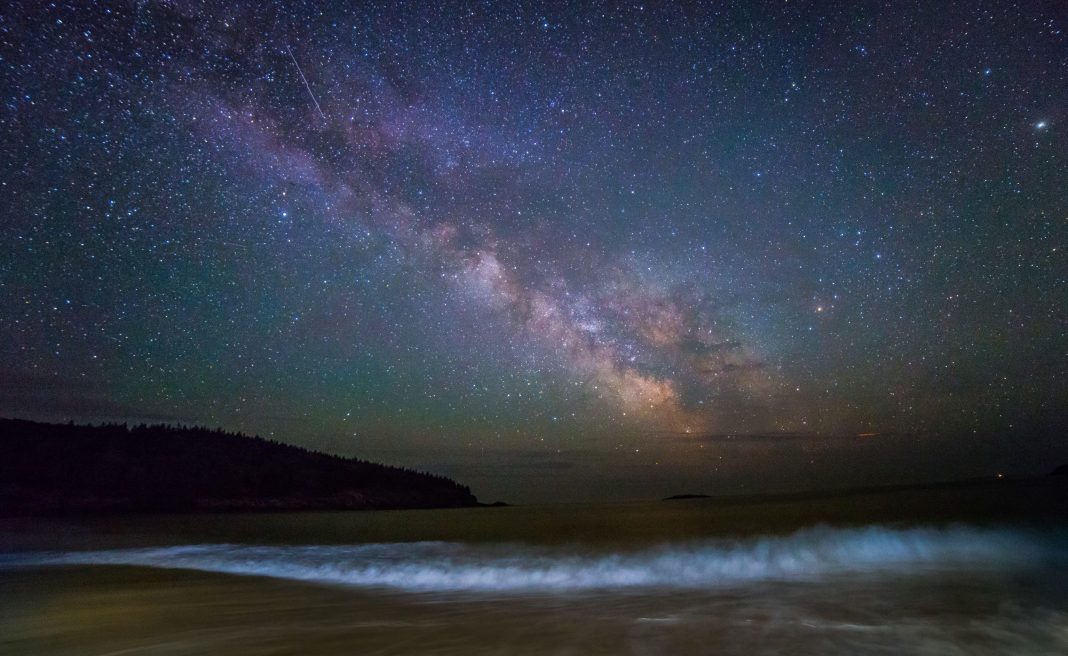Photography © Kent Miller / NPS
Since time immemorial, humankind has looked to the stars, finding not only great beauty in Earth’s celestial ceiling but meaning and portent too. The ancient Greeks created an intricate mythology about the deities who ruled the skies between dusk and dawn, such as Selene, the Titan goddess of the moon, and Nyx, a primordial goddess of the night. Other cultures, including Hindu, Aztec, Navajo, and Maya, formed their own legends about the stars, while early sailors guided their ships by them. Long-ago astrologers used heavenly bodies to divine the future—and their modern counterparts still do. Even now, most of us regard these diamonds in the sky with wonder, if not awe. For a potent reminder of just how small we are and just how vast the space above us is, visit the following parks, where night skies are darkest and stars shine brightest.
Death Valley National Park, California and Nevada
The legendary Death Valley is not only the hottest place on Earth; it’s also the driest location in the country, meaning cloud-free nights are usually manifest. Its unusually starry nights and protection from light pollution earned Death Valley certification as an International Dark Sky Park—at 3.4 million acres the largest such park in the world. Winter offers the best stargazing, when both temperatures and haze from nearby cities are lowest. To wrap yourself in an ethereal glow that might make you feel as though you’re standing atop a distant, unknown world, visit Badwater Salt Flats or Mesquite Flat Sand Dunes under the full moon’s gaze. Otherwise, the ebony skies of the new moon are best for viewing the glorious Milky Way. nps.gov/deva
Cherry Springs State Park, Pennsylvania
The only International Dark Sky Park in the eastern United States, Cherry Springs, which sits on a 2,300-foot peak inside the Susquehannock State Forest, offers the kind of night firmament once witnessed by our forebearers a century ago. With the nearest city 60 miles away and closer small communities all ensconced in deep valleys, artificial skyglow is nonexistent. On the clearest night, the Milky Way casts a shadow and 10,000 stars are visible to the naked eye; most residents of the eastern United States never see the former and see only a fifth of the latter. The Andromeda Galaxy, the Omega Nebula, and the Space Station may all be witnessed from this remarkable park. Visit in winter, when humidity is low and Cherry Springs’ hours are extended. cherryspringsstatepark.com
Voyageurs National Park, Minnesota
A landscape of pristine boreal forest and lakes silent and still save for the eerie cry of loons, Voyageurs National Park sits tucked away on Minnesota’s border with Canada. In winter, its location in the far north gives rise to temperatures cold enough that there is little moisture in the air, providing bountiful clear nights. Light pollution is low too in this wild pocket of the world, maximizing the intensity of night-sky showstoppers including the aurora borealis and meteor showers. Look for constellations like Taurus, Gemini,
and Cancer from the relative comfort of the Voyageurs Forest Overlook parking lot; in the warmer months rent a houseboat—more than 40 percent of Voyageurs is water. nps.gov/voya
Craters of the Moon National Monument and Preserve, Idaho
The country’s only space within the national park system that owes its name to a heavenly body, Craters of the Moon, like Death Valley and Cherry Springs, has won International Dark Sky Park status. Because its 618 square miles range along the Snake River Plain in south-central Idaho, a place so rugged and forbidding that all but the hardiest and most bold have refused to settle there, the night skies remain blissfully absent of artificial light. But it is the blasted moonscape of the park itself—created some 15,000 years ago by volcanic eruptions from which grew sprawling lava fields and formations—combined with the low southern horizon over the plain that make for some the country’s most dramatic viewing of far-distant galaxies, nebulae, and planets. nps.gov/crmo
Acadia National Park, Maine
Each year more than three million people flock to Acadia National Park for its untrammeled North Atlantic coastline and landscape beautifully broken by seven summits rising over 1,000 feet. But there are few population centers of significant density around the park’s 47,000 acres to bleed electric light into the night, so celestial sights like the Milky Way shine brightly. In winter, the crowds depart and quiet calm returns, but for the rocky shores battered by frothing, wild-hearted waves. Just beyond them the sea reflects the sky even after the sun sets. Watch the magic unfold from Park Loop Road, especially Ocean Drive, which provides a peek of those breathtaking reflections. nps.gov/acad



































